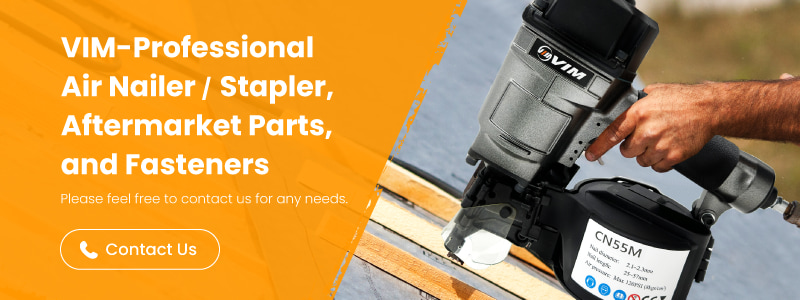Narrow vs Wide Crown Stapler: 3 Steps to Make the Right Choice
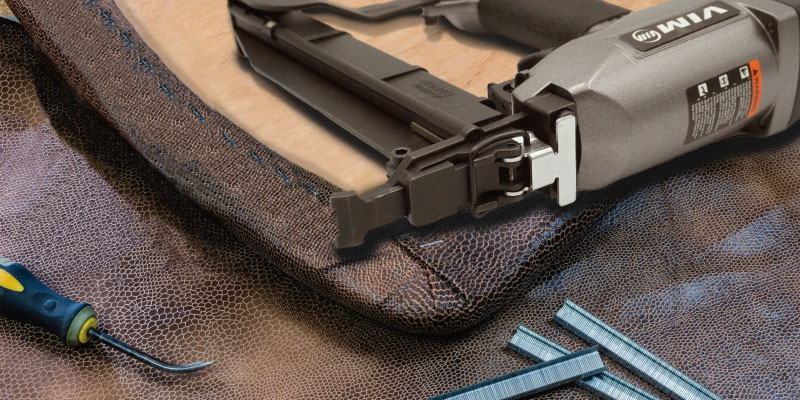
Introduction
“It’s all crown staplers—why do they have differences? How do I choose the right stapler for my applications?” These are common questions among both seasoned professionals and first-time users.
In woodworking, packaging, and light construction, crown staples play a critical role in fastening materials efficiently and securely. However, not all staples—or staplers—are created equal. Choosing the wrong type of crown stapler or staple can result in loose joints, damaged materials, or premature structural failure.
This article explores the key differences between narrow crown staplers, wide crown staplers, and the crown staples they use. From tool compatibility to application-specific recommendations and finish options, you’ll gain clarity on how to select the right stapling system for your business or project needs.
Understanding Crown Staples: From Narrow to Wide
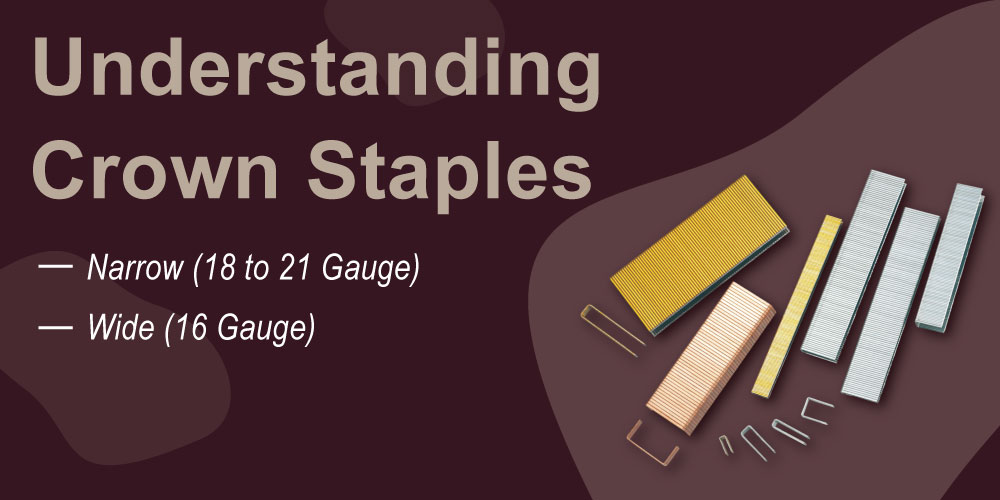 Crown staples are defined by the shape and dimensions of their crown—the horizontal bridge that connects the two legs of the staple. This crown sits flush against the material surface and determines how much surface area is used to distribute holding force.
Crown staples are defined by the shape and dimensions of their crown—the horizontal bridge that connects the two legs of the staple. This crown sits flush against the material surface and determines how much surface area is used to distribute holding force.
The narrow crown staples and wide crown staples differ significantly in crown width, wire gauge, and application suitability-factors that directly impact tool compatibility and fastening performance. Understanding the structural profiles and use cases of narrow and wide crown staples helps users choose the right fastener for both their tool and their application.
Narrow Crown Staples
Narrow crown staples typically feature a crown width of around 4 to 7 mm and are available in 21 to 18 gauge wire sizes. Their compact profile makes them ideal for finish-oriented applications where precision and minimal surface disturbance are essential. These staple are commonly used in cabinetry, paneling, interior trim, and light furniture assembly-jobs that require a clean finish without compromising holding strength. Their smaller crown allows for better concealment, especially in visible or decorative installations.
【Related products: Narrow Crown Stapler】
Wide Crown Staples
Wide crown staples generally have a crown width of 11 to 13 mm or more and are produced in heavier gauges such as 16 gauge. With a broader bridge, they provide greater surface contact and stronger holding power, making them suitable for heavy-duty fastening tasks. These include securing insulation, building pallets and crates, or assembling structural wood components. Their larger footprint helps distribute pressure over a wider area, which reduces material tearing and enhances load resistance in demanding environments.
【Related products: Wide Crown Stapler】
Matching Staplers with Crown Staples
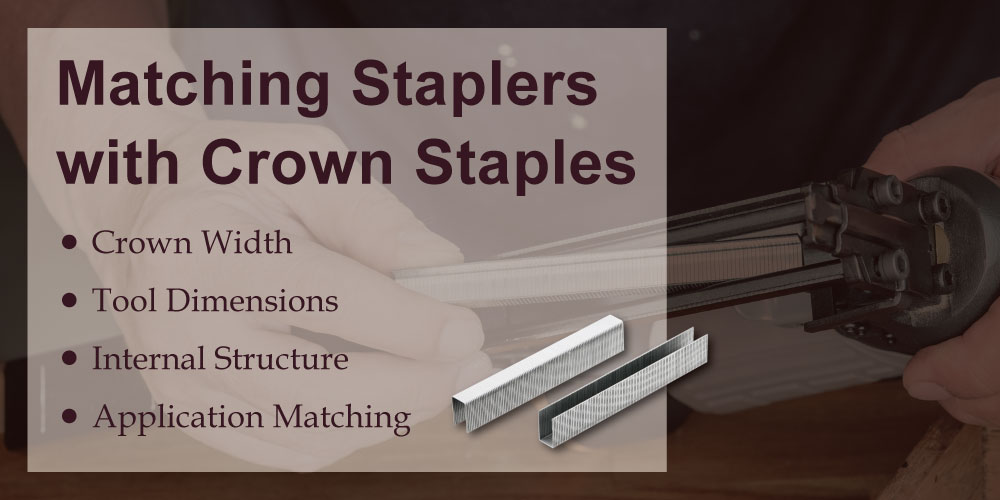 Selecting the right crown staples is only half the job—ensuring they match your stapler is equally critical. From crown width to tool dimensions and application type, several factors determine whether a staple will function correctly in a given stapler model. Misalignment between staple and tool can result in misfires, jamming, or even tool damage.
Selecting the right crown staples is only half the job—ensuring they match your stapler is equally critical. From crown width to tool dimensions and application type, several factors determine whether a staple will function correctly in a given stapler model. Misalignment between staple and tool can result in misfires, jamming, or even tool damage.
【Extended reading: Unlock the Secret of Narrow Crown Staplers: 4 Advantages You Must Know】
Crown Width
The crown width of a staple refers to the distance between the two legs across the top. Staplers are designed to accept specific crown ranges. Attempting to load a wide crown staple into a narrow crown stapler-or vice versa-will lead to poor fit , misfeeds, or operational failure. Crown width should always be your first checkpoint when matching staples with staplers.
Tool Dimensions and Internal Structure
Even if crown width matches, internal dimensions such as magazine width, guide rail spacing, and driver blade shape vary by brand and tool series. A staple that fits dimensionally may still not cycle correctly if the leg length, wire gauge, or crown profile does not align with the stapler’s firing mechanism.
Some tools are highly specialized, with components designed for proprietary staples only. As a result, not all staples within the same crown category are cross-compatible across brands. Always check the stapler’s specification sheet or consult your supplier before mixing fastener sources.
Application Matching
Stapler and staple selection should always reflect the material, holding force required, and visual finish expectations. In general, narrower staples are chosen for cleaner, less intrusive fastening, while wider staples are used for stronger surface hold. Understanding this baseline helps ensure your tool-staple pairing aligns with project demands.
When to Choose Narrow Crown Stapler vs Wide Crown Stapler
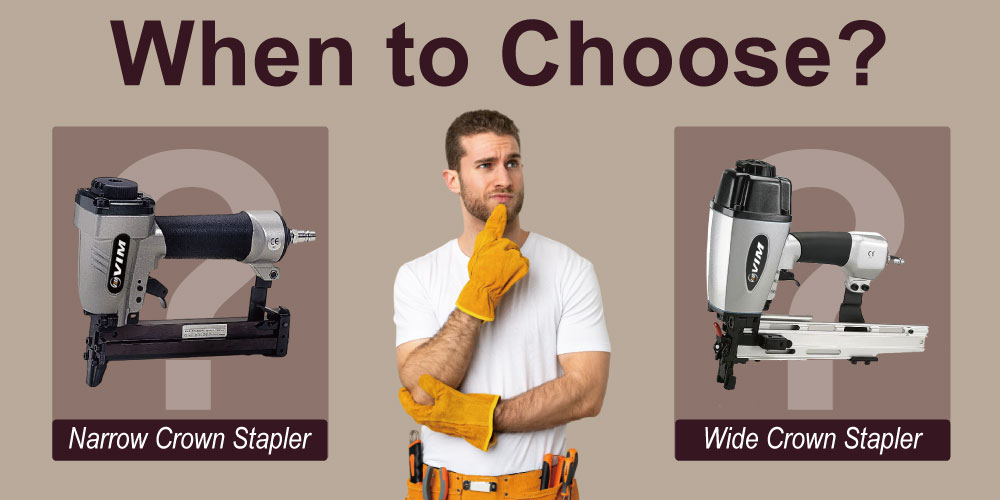 Choosing between a narrow crown stapler and a wide crown stapler depends on multiple factors, including material type, required holding strength, surface condition, and the level of finish expected. Each tool is optimized for specific fastening tasks, and selecting the right one can directly impact work efficiency and long-term fastening reliability.
Choosing between a narrow crown stapler and a wide crown stapler depends on multiple factors, including material type, required holding strength, surface condition, and the level of finish expected. Each tool is optimized for specific fastening tasks, and selecting the right one can directly impact work efficiency and long-term fastening reliability.
Narrow crown staplers are ideal for applications where clean appearance and controlled fastening are important—such as decorative woodwork or assembly of lightweight components. Wide crown staplers, on the other hand, are better suited for demanding environments where higher holding force and material coverage are required. Selecting the appropriate stapler not only ensures better tool performance, but also reduces material waste, prevents tool jamming, and improves operational consistency.
【Extended reading: Everyone Needs to Know the Complete Guide to Wide Crown Staplers】
Comparison Chart
| Feature | Narrow Crown Stapler | Wide Crown Stapler |
|---|---|---|
| Gauge | 18 to 21 gauge | 16 gauge |
| Holding Strength | Moderate | Strong |
| Surface Impact | Minimal marking | Large contact area |
| Material Suitability | . MDF . Plywood . Softwood |
. Plywood . OSB . Fiberwood . Cardboard |
| Preferred Finish | . Clean . Concealed . Lightweight joints |
. High strength . Visible . Reinforced joints |
| Applications | . Trim work . Cabinetry . Interior panels . Furniture assembly |
. Carton closing . Insulation fastening . Crate or pallet building |
Material Considerations: Coating and Finishing for Crown Staples
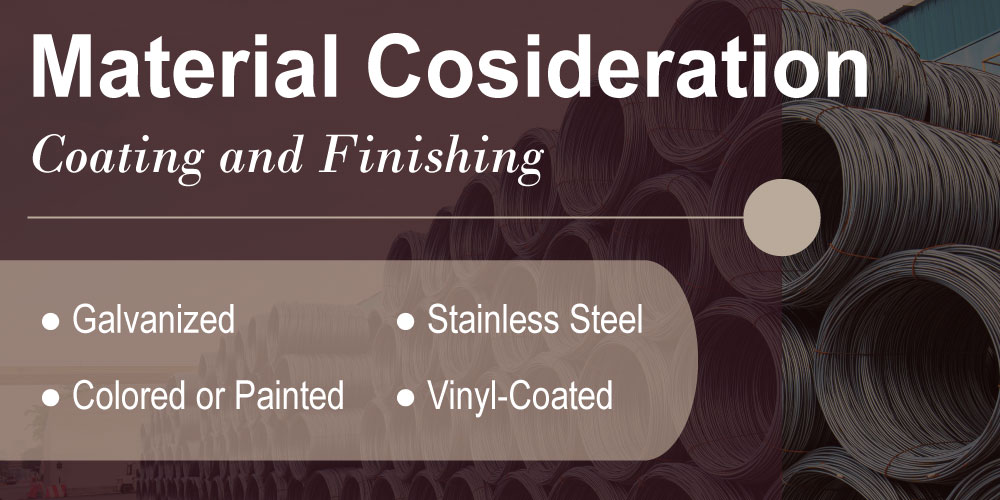 Beyond dimensions and crown type, the coating and surface finish of crown staples play a critical role in performance, durability, and appearance. Selecting the appropriate finish ensures the staple will perform reliably in its intended environment-whether it’s exposed to moisture, requires corrosion resistance, or needs to match the aesthetic of the final product.
Beyond dimensions and crown type, the coating and surface finish of crown staples play a critical role in performance, durability, and appearance. Selecting the appropriate finish ensures the staple will perform reliably in its intended environment-whether it’s exposed to moisture, requires corrosion resistance, or needs to match the aesthetic of the final product.
【Extended reading: Stop Guessing: 13 Proven Fastener Materials for Choosing the Right Nails and Staples】
【Extended reading: 14 Surface Treatments That Matter: A Closer Look at Fastener Finishing】
Galvanized
The zinc coating offers basic protection against rust, and is suitable for light construction, fencing, and packaging where humidity or outdoor exposure is a concern.
Colored or Painted
Typically used in visible fastening applications where visual consistency is important. It can help achieve a clean, uniform look by matching the fastener color to the surrounding surface.
Stainless Steel
This staple material provides superior corrosion resistance and is ideal for coastal, industrial, or high-humidity environments.
Vinyl-Coated
This coated can enhance surface grip and is commonly selected for structural tasks like sheathing, subflooring, or pallet assembly, where increased holding power is required.
FAQ in the Real World
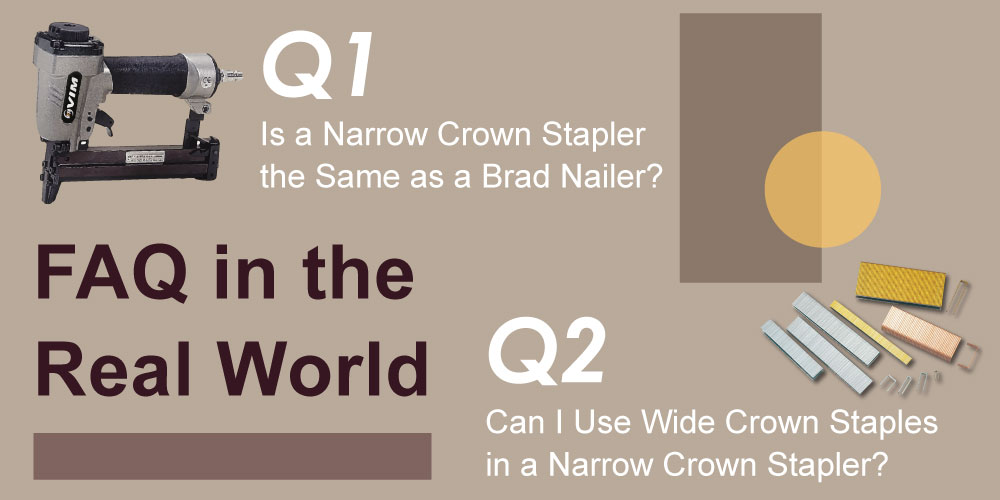 Here's a quick look at some real-world questions buyers and users often ask when working with narrow crown staplers, wide crown staplers, and crown staples. These clarifications can help prevent tool misuse, reduce operational downtime, and ensure a better match between fasteners and applications.
Here's a quick look at some real-world questions buyers and users often ask when working with narrow crown staplers, wide crown staplers, and crown staples. These clarifications can help prevent tool misuse, reduce operational downtime, and ensure a better match between fasteners and applications.
Is a Narrow Crown Stapler the Same as a Brad Nailer?
No, these are two different tools designed for different fastening needs. A narrow crown stapler drives staples that have two legs connected by a thin crown, which provides a balanced hold across the surface. It’s commonly used in light furniture, cabinetry, and panel attachment where moderate holding power and surface coverage are required.
A brad nailer, on the other hand, shoots single and straight nails with no crown. Brad nails are thinner and leave smaller holes, making them ideal for finish carpentry where minimal surface disturbance is desired-such as attaching trim or decorative molding.
While both of narrow crown stapler and brad nailer may look similar, they are not interchangeable in terms of fasteners, applications, or results.
【Extended reading: What is Finishing Nailer? Differences Between Brad Nailer and Finish Nailer】
Can I Use Wide Crown Staples in a Narrow Crown Stapler?
It’s not recommended to use wide crown staples in a narrow crown stapler. Staplers are designed for specific crown widths, wire gauges, and staple profiles, and using staples outside the intended range can lead to feeding issues, misalignment of the driver blade, or even internal tool damage.
To avoid compatibility issues, it's best to check the stapler’s technical specifications or product manual to confirm the acceptable crown width range. If you're unsure, feel free to contact us—we're happy to assist and provide professional advice tailored to your application.
Conclusion
Understanding the differences between narrow crown staplers and wide crown staplers goes far beyond tool size or staple width-it’s about selecting the right fastening system for the job. From structural design and wire gauge to crown width and coating, each factor influences performance, reliability, and material compatibility.
By evaluating key considerations like too-staple compatibility, desired holding strength, and surface finish requirements, users can make more informed decisions and achieve better results-whether for interior trim work or heavy-duty structural assembly. With the right combination of stapler and staple, you can improve fastening consistency, reduce material waste, and ensure a safer, more efficient workflow.
Article Classification
Recent Articles
- Avoid Costly Jams: 5 Proven Hog Ring Plier Repair Solutions that Work
- 4 Simple Ways to Maintain Your Hog Ring Plier for Better Performance
- Narrow vs Wide Crown Stapler: 3 Steps to Make the Right Choice
- Safety Starts Here: Explore 5 Smart Safety Designs in Pneumatic Nailers and Staplers
- Handheld vs. Foot-Operated Carton Staplers: Which Is Better for Your Workflow?

